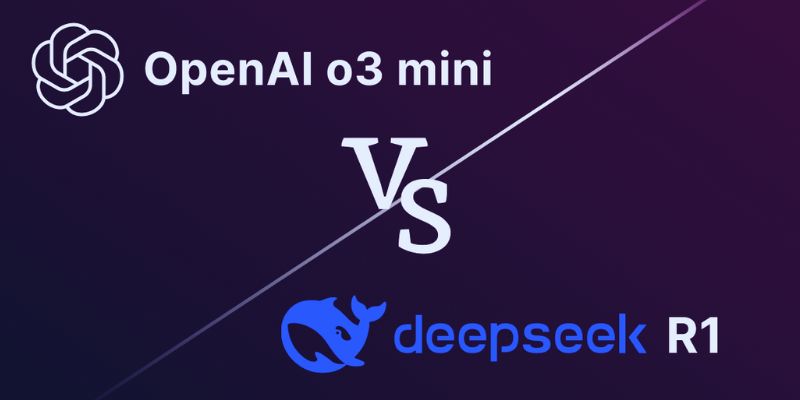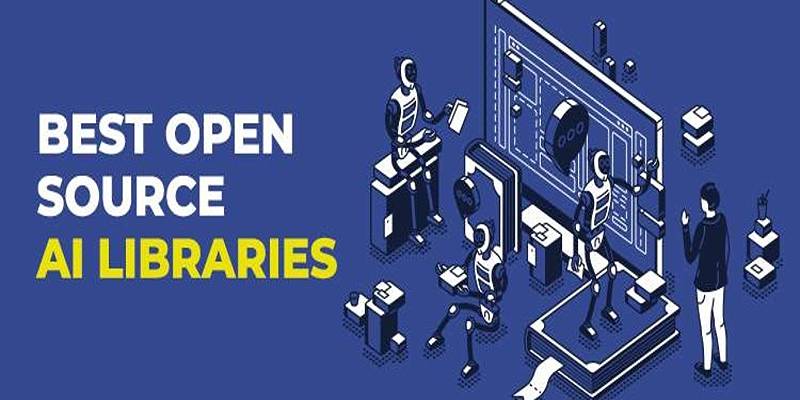Two newly developed artificial intelligence models are DeepSeek R1 and OpenAI O3 Mini. Though each has special qualities, which one is better? This comparison examines their performance, adaptability, and optimal use cases. DeepSeek R1 is renowned for its multilingual task performance. OpenAI O3 Mini is meant for quick replies and great accuracy.
Selecting one of them will depend on certain requirements, such as research, coding, or content creation. This article compares their performance in several spheres. We will assess the accuracy, speed, and adaptability of processing. At last, you will know which artificial intelligence model fits your requirements. Let's investigate their respective strengths and differences closely.

Performance and Processing Speed
Choosing an artificial intelligence model requires considering processing speed. DeepSeek R1 is meant for quick text generation. It can effectively manage large amounts of data and reacts fast, perfect for real-time applications. Conversely, OpenAI O3 Mini was designed for fast interactions. It answers almost instantly. Its lightweight design guarantees seamless running, making it a perfect fit for jobs requiring quick input.
DeepSeek R1 shows good detailed responses when evaluated on different tasks. OpenAI O3 Mini shines, though, in fast trades. Users looking for quick responses could want O3 Mini. DeepSeek R1 can help those looking for thorough responses. Processor capability also affects usability. DeepSeek R1 is meant to manage challenging prompts without delays. OpenAI O3 Mini might lose depth in responses but prioritize speed. This element helps to decide which model best fits personal requirements.
Accuracy and Content Quality
Artificial intelligence performance depends heavily on accuracy. DeepSeek R1 gives exact, orderly answers. It lessens misunderstandings by better-grasping context, making it useful for long-form materials and difficult subjects. Though accurate, Open AI O3 Mini emphasizes fast responses. Sometimes, it offers shorter or less thorough responses. For broad searches, it is still rather dependable nonetheless. Its precision fits quick study and casual users.
DeepSeek R1 produces more polished output in content development. It keeps longer texts coherent. For short-form content, OpenAI O3 Mini performs admirably. DeepSeek R1 is the superior option if correctness in long answers counts. Furthermore, grammar and sentence construction are important. DeepSeek R1 offers a clearer layout and organization. Though effective, Open AI O3 Mini might need more tweaking for use in the professional domain. DeepSeek R1 is thus perfect for the production of polished content.
Versatility in Applications
Various jobs call for different users of artificial intelligence. DeepSeek R1 has many uses. It backs multilingual communication, coding, and content creation. It does well on academic and commercial projects. For simple tasks and quick responses, call for OpenAI O3 Mini. It shines in conversations. For quick replies and customer support, it performs nicely. It might, however, find difficult, complicated cues.
DeepSeek R1 is more consistent when creating professional materials. For light-hearted and casual jobs, the OpenAI O3 Mini is ideal. Both models efficiently fulfill distinct needs depending on them. Flexibility in terms of user preferences is another feature. DeepSeek R1 can better customize answers. Though it has few customization choices, Open AI O3 Mini is efficient. Depending on certain needs, this can affect a user's choice.

Multilingual Capabilities
Global users depend on language support. DeepSeek R1 provides great linguistic capability. It translates and understands several languages rather precisely. That makes it valuable for global content and correspondence. OpenAI O3 Mini likewise supports several languages. Its correctness, meanwhile, could change depending on the dialect. It struggles in non-English settings but does well in English.
DeepSeek R1 is the recommended solution if multilingual capability is necessary. It guarantees improved language comprehension and complex translations. Though not as developed, Open AI O3 Mini does well in simple translations. For companies and researchers handling several languages, DeepSeek R1 is especially helpful. Though capable, OpenAI O3 Mini lacks the depth required for thorough multilingual work. DeepSeek R1 gains a major edge from this.
Coding and Technical Abilities
AI helps developers code a lot of times. DeepSeek R1 has sophisticated coding capability. It knows several programming languages. It facilitates the effective generating and debugging of code. Additionally, OpenAI O3 Mini helps with development. Its powers are restricted, nevertheless, about DeepSeek R1. It has great analytical power but does well in fundamental syntactic repairs.
DeepSeek R1 is more dependable if coding takes top importance. It produces ordered explanations and code. For rapid coding searches, use OpenAI O3 Mini Excel. DeepSeek R1 will help serious developers especially. Furthermore, the benefits of DeepSeek R1 include debugging and sophisticated problem-solving. While open AI O3 Mini is not fit for major programming projects, it can assist with small coding chores. DeepSeek R1 is the preferable option for developers because of this difference.
Cost and Accessibility
The choice of an AI model depends on accessibility and price. Many users can access DeepSeek R1. It provides strong features at an affordable price, perfect for budget-conscious consumers looking for great performance. OpenAI O3 Mini forms part of OpenAI's ecosystem. It might be part of more general subscription packages. Although quick, it could have restrictions on free access. Paid versions open more sophisticated capabilities.
DeepSeek R1 appeals to those who prioritize cost. For those already part of OpenAI's ecosystem, OpenAI O3 Mini is excellent. The correct decision will depend on access choices and financial situation. Availability on several platforms is another element. DeepSeek R1 allows several devices and integrations. Available OpenAI O3 Mini has particular restrictions. Users who require deployment flexibility may find this problematic.
Conclusion:
DeepSeek R1 and OpenAI O3 Mini meet various purposes. DeepSeek R1 shines in programming, content creation, and multilingual work. For simple chores and quick reactions, call for OpenAI O3 Mini. DeepSeek R1 is best if precision and adaptability count. OpenAI O3 Mini is a great candidate for rapid interactions and informal use. Selecting one of them relies on certain use scenarios. Both versions have merit; DeepSeek R1 offers more general capability. For lightweight jobs, the OpenAI O3 Mini is still a great choice. Think about your requirements to choose the correct artificial intelligence for you.











